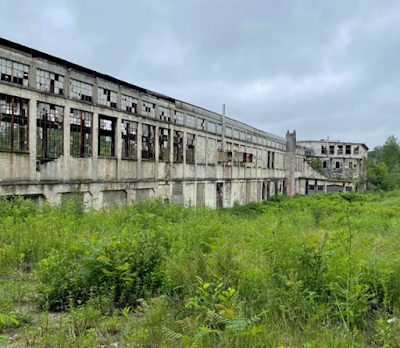Officials from the U.S. Environmental Protection Agency (EPA) have met with representatives of the Town of Windham, the Maine Department of Environmental Protection and a consulting firm to review final plans for the demolition of the Keddy Mill on Depot Street in South Windham this fall.
The site has a long history, with operations beginning in the late 1700s and ending in 1997. The building that will be demolished was used as a grist and carding mill, a pulp mill, a box-board manufacturing facility and a steel mill. Throughout the industrial history, several buildings have been demolished and others added to the mill complex. The site has been identified with contamination from various hazardous substances, including polychlorinated biphenyls (PCBs), volatile organic compounds (VOCs), heavy metals and petroleum hydrocarbons.
Town officials were briefed by the EPA that their demolition and cleanup will include excavation and off-site disposal of about 22,000 cubic yards of contaminated soil; targeted treatment of soil excavation in support of groundwater cleanup; groundwater treatment; excavation and off-site disposal of about 320 cubic yards of contaminated sediment from the Presumpscot River.
EPA administrators say that site restoration work will include cleanup of the riverbed, riverbank, wetland and floodplain habitat.
Last summer, EPA New England Regional Administrator David W. Cash said that land-use restrictions to prevent exposure to site-related contaminants in groundwater and fish tissue will be in place until all cleanup levels are met.
Cash said the Keddy Mill site will be subject to EPA inspections and limited operation and maintenance, along with monitoring of groundwater and fish tissue to evaluate the achievement of cleanup levels. The EPA will also conduct Five-Year Reviews to assess the protectiveness of the cleanup remedies.
"EPA is very pleased that after years of assessment and discussion with the community, we are moving into a significant stage of recovery and reclamation of this site," Cash said. “The upcoming building demolition and removal of contaminated materials is an important step in the lengthy process of returning a Superfund site to productive use in a community."
The EPA’s Superfund program was established in 1980 and is responsible for cleaning up some of the nation’s most contaminated land and responding to environmental emergencies, oil spills and natural disasters. To protect public health and the environment, the Superfund program focuses on making a visible and lasting difference in communities, ensuring that people can live and work in healthy, vibrant places.
Maine environmental officials say they support EPA’s efforts to demolish the Keddy Mill structures and subsequent cleanup of the grounds at the site.
“The Maine DEP is pleased to continue working with our partners at EPA and the citizens of Windham to address historical contamination at the Keddy Mill, eliminating the threats to public health and the environment and returning the property to a productive future,” said Maine Department of Environmental Protection Commissioner Melanie Loyzim.
Original data was first collected at the Keddy Mill complex during preliminary investigations in the 1980s and included a fuel oil spill there, resulting in two previous EPA cleanup actions performed at the site. In 1997, a project to remove nearly 11 tons of petroleum-impacted soil from the north-central portion of the property was conducted in accordance with Maine Department of Environmental Protection requirements. In 2010, a second cleanup action removed accessible PCB-contaminated fuel oils in piping and PCB-contaminated sludge, dirt, debris, and oil materials within the buildings on the site.
But contamination problems at Keddy Mill led the EPA to complete a thorough site investigation in January 2013 and a Hazard Ranking System package in April 2013. Following those investigations, the Keddy Mill site was placed on the National Priority List Superfund in May 2014. A Remedial Investigation and Feasibility Study was initiated there in 2015 to determine the nature and extent of contamination and the risks posed to human health and the environment and evaluate alternative cleanup measures if necessary.
A Final Risk Assessment Report in November 2021, a Human Health Risk Assessment documentation in June 2023, an Ecological Risk Assessment documentation in June 2023 and a Final Report in June 2023 were made available to the public in support of the Proposed Plan for the Site last summer. Following a 30-day public comment period, selected response actions for the Keddy Mill site were finalized on Sept. 28, 2023.
The EPA’s cleanup plan is expected to take between two to four years to design and execute and will be implemented following demolition of the mill complex and associated structures on the property. <



No comments:
Post a Comment